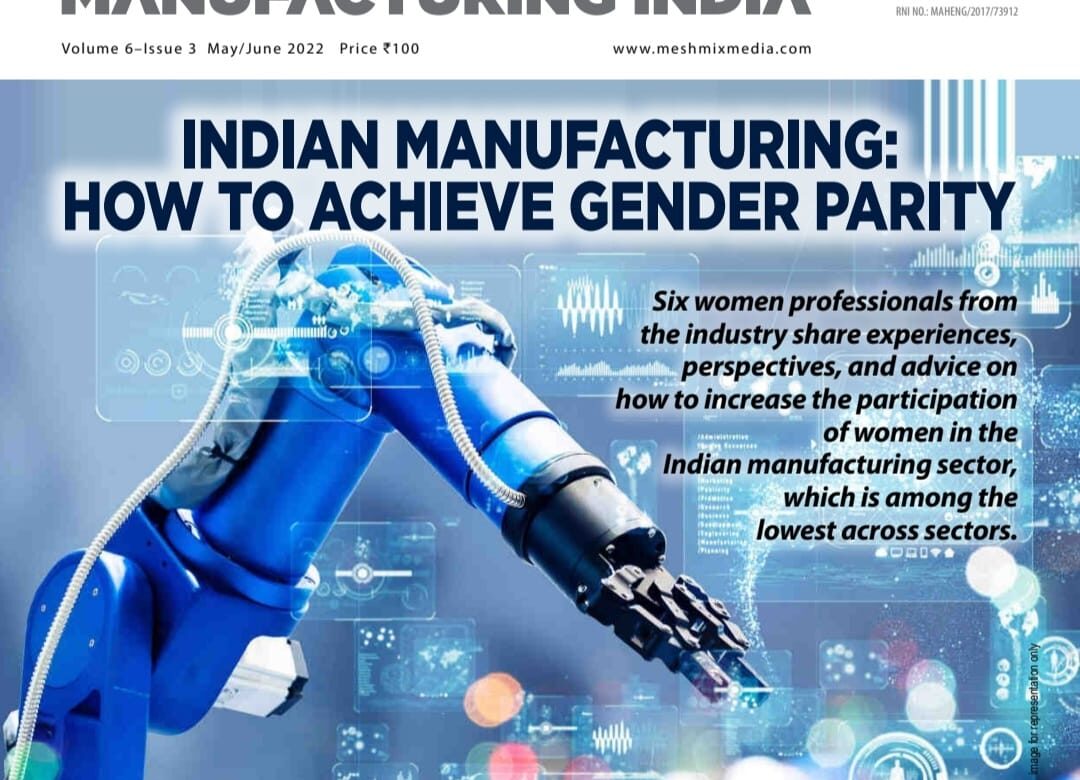Six women industry professionals share valued experiences, perspectives, and advice on how to increase the participation of women in the Indian manufacturing sector, which is among the lowest across sectors
In this discussion, arguably the most important talk of the year for the sector, we spoke with six eminent speakers from the industry who shared their perspectives and recommended possible ways to increase the participation of women in the manufacturing industry.
It’s an understatement to say that our manufacturing industry sees low participation of women. At somewhere between 3 to 12 percent (GE and Avatar Research 2021) depending on the vertical, the sector’s Female Labour Force Participation Rate (FLFPR) is low even compared to the already low level of participation across all the sectors, including services, construction, and agriculture of 16 percent (source: World Bank). This talk was to understand why the situation is so severe, particularly in our sector, and extension, our country.
Panel speakers included Ms. Bhavana Bindra, Managing Director, REHAU South Asia; Ms. Nidhi Maurya, Sales Manager- Digital Transformation, Hexagon (Manufacturing Intelligence division); Ms. Gayathri Sharma, Head of Communications- India & South Asia, Rolls-Royce; Ms. Ameeta Nehra – Lead Corporate Communication, Everest Blowers; Dr. Komal Pawar, Sr. Pre-Sales Consultant, Hexagon (Power, Process, Marine division), and Ms. Kavya Iyer, Business Head, Lex Technoaid International. The talk was hosted by DMI Editor Aanand Pandey. Presenting, edited, and abridged excerpts of the discussion.
Q: What are your perspectives on the severely low rate of participation in the Indian workforce, particularly in the Indian manufacturing sector’s workforce?
Ms. Ameeta Nehra: We have progressed far as a nation in many areas, particularly in education, development, and economy. However, the participation of women in our workforce is comparatively very low. This is because of a combination of several factors namely social constraints, economic background, education, and security concerns.
Safety concerns can be counted as one major element in the low FLFPR. Predominantly, manufacturing units are in remote places making commuting a hassle for the females. There would be only a handful of organizations that would be providing their female staff with ease of commuting in terms of common company vehicles. Women traveling for work to distant locations are always anxious for their way back home. A working woman always has extra baggage on her shoulders and to add to that the safety & security factors of traveling to distant places would only weigh her down. And I believe it would be an altogether difficult scenario for someone who would be putting up in developing cities where the population has yet to get accustomed to women traveling to manufacturing companies for work reasons.
Ms. Bhavana Bindra: Social structure is certainly a factor. As the economy progresses things will get better. A lot of issues [responsible for a low FLFPR] go back to some deep-rooted beliefs. Even more, there are several aspects we need to keep in mind.
First, women’s labour force participation is very different in urban India than it is in rural India. Secondly, we need to look at the type of economic growth whether it is led by certain sectors like manufacturing or agriculture that have greater or lesser participation of women. Third, we need to consider – when looking at the manufacturing sector – whether we are creating that many jobs that are amenable for women to participate in.
The fourth aspect is skill-sets. Our vocational courses must focus on making women employable in the kind of jobs that the industry is creating.
The fifth aspect would be that when they do participate, we need to understand that they are dealing with society’s deep-rooted conditioning. Do we have enough support structures, that can help them deal with [socially mandated] responsibilities?
A lot of women would opt for part-time work or some flexibility in their work. That again is something, as we grow as an economy, we will have to ask whether we have enough of that available.
We as a [society/industry] don’t have a good support system. The government and many organisations do provide support. But that is not as pervasive or available to everybody.
Our policies will have to be such that they encourage industries to have more women in the workforce. It goes back to a topic very close to my heart [which is] presenting the business case for diversity. I think that’s something which hasn’t been sold enough. However, the work has started, I would say. In the last decade and a half, there has been more awareness on this front, but it is yet to translate into something which can change the norms that are centuries old.
Ms. Gayathri Sharma: This makes me think about the theme for this year’s Women’s Day also, which is Break the Bias. I would like to start by saying that bias exists – that’s the first thing we need to acknowledge.
Further, there is a lot of conditioning in the way that girls are brought up, in how we are usually conditioned to think about taking up careers like arts or science and technology and engineering. And that itself limits the kind of participation that there will be in sectors like manufacturing. That’s where I also find that we need to bring about societal and behavioral change. That will not happen overnight, and it cannot only be the government’s responsibility either.
A cohesive effort is needed. Small steps are being taken and hopefully, there will be greater progress in the future. I do believe that there is a lot of hope for the following reason: a lot of awareness is being created about addressing this issue from the grassroots level itself. This bias itself is not limited to rural or urban, it exists everywhere. I was just watching an Indian stand-up comedy the other day and they’re still making jokes about how relatives commiserate with people who’ve had a girl child and that’s an urban audience who’s laughing at it because they identified with it. That is the level of bias and conditioning that we are all living with.
There’s also the other spectrum. When the time comes to prioritize family or children, women are usually the ones who have to make the choice between work and home and take a break from their careers. That is changing but the progress is slow. It’s a very small percentage of men who take the choice to stay home and take care of the children while the woman continues with her career. But I think that shift is happening.
There are also efforts being made by the government. I was visiting a government school for girls a few days ago as part of a STEM initiative that Rolls-Royce supports. I felt immense pride to see girls in that school talking about becoming engineers and doctors. Last year, eight students from the school cleared NEET and four students cleared JEE. All this gives me a lot of hope. I hope that the government will also continue to make efforts, and companies like ours will continue to support those efforts to make changes at the education level to support these children.
I think the crux of it will always be about behavioral change, about how we can bring about that change slowly because I think a strong factor that helped those girls to come forward was that we did a lot of counseling to explain to parents that it’s good for girls to opt for science. I could see a group of proud parents sitting in the audience as their daughters got scholarships to pursue STEM studies. That for me was a moment of fantastic hope for the future. I think that’s the way forward for the manufacturing sector.
Undoubtedly, there are many other issues. I have spoken to so many women engineers within my company who’ve talked about how, when they started out, they were the only woman engineer on the shop floor, and how they faced all the challenges that went with that. But as things evolve, the industry will evolve as well. When you get your first woman employee, you will suddenly think – do I need a separate washroom for women? It is as basic as that in many places. I think those changes will happen; they will evolve.
Ms. Kavya Iyer: I concur with all these points. I will focus a bit on why it is so starkly low in the manufacturing sector. One factor is the general mindset in our country that manufacturing involves a lot of hard manual labour. And that the environment is not very conducive for women. But over the last 10-20 years with automation coming in, the skill sets that are needed in this segment are now entirely different such as dexterity, motor skills, decision making, precision, and suchlike.
To speak [from the perspective of] my own journey, I did engineering about 12 years ago – we were about two students in a class of 60. That was more or less the case during my father’s [engineering days] as well. Right now, when I speak to people at the college where I studied, not much has changed. And I don’t see why there would be any difference if the manufacturing sector doesn’t present itself to be a lucrative option for girls.
Companies need to realize the advantages of the inclusion of women. Maybe we could pick up some data shared by industries that have more diverse groups, like IT or healthcare which are more inclusive, and see the results that they have generated in terms of productivity, creativity, improvements in efficiency, and so on. I think that will be a big catalyst for companies to take a call to encourage hiring more women.
Even in terms of training, we don’t have a sufficient number of vocational programs in Tier-2 to Tier-3 cities to help develop skill-sets for women. So, we need to come up with vocational programs that are relevant to the manufacturing sector.
Until we get this critical number of women in any organisation, we need to give that extra push and encouragement and find some way of incentivizing women to join the sector. Once we have this critical number or percentage, everything around it like facilities, amenities, health, and safety policies will fall into place.
Dr. Komal Pawar: I have seen, from experience, that cultural norms [which hold back women] continue to exist. Women have to be primarily occupied with their expected roles, particularly taking care of domestic tasks. They are expected to be juggling these activities with careers.
Secondly, there are misconceptions about doing a job in the manufacturing sector. Most of the time, women think that it is a labor-intensive work to be done on a 24×7 basis. So, they settle for any job on a short-term or a part-time basis. Thirdly, I feel that the awareness has to increase among women starting from a young age, especially from an educational point of view. If we educate them about how the manufacturing industry functions and how the application of automation technology is also on the rise, introducing a variety of areas where women can also participate, will help the cause.
Similarly, initiatives that promote diversity and inclusion will play a major role in all the organisations. This is going to bring about a lot of change. At Hexagon, we have been undertaking such initiatives that promote diversity and inclusion. For example, Hexagon Capability Centre India (HCCI) is a star member of HYSEA. HYSEA is a unique industry initiative and a non-profit organisation that brings together the various IT and ITeS Organisations in Telangana under one umbrella to network, share knowledge and work closely with the Government and other industry stakeholders for business growth, social development, and economic prosperity of the state.
HCCI is committed to driving positive change by addressing societal challenges. We have been empowering adolescent girls and young women as we believe they are the catalyst for long-term sustainable change.
Ms. Nidhi Maurya: I would like to highlight the challenges around [women getting access to] education. Coming from a rural background I would say that education makes a lot of difference when you choose an industry. If I have to give an example of a child choosing a future for herself, they have to look around why a particular child wants to become a doctor or an engineer or an IAS officer. So, they look around, they see people and then they choose while considering that there is a certain authority with becoming a doctor or an engineer. This partly addresses the question about manufacturing as to why there are so few women in the workforce? To answer that, let’s look at, for one, how many role models do we have in the manufacturing sector right now? When a child will look up to them, she will also want to become like them.
Today, old notions about the manufacturing industry that its work culture and the facilities are not good for women no longer hold true. A lot has changed – for example, a lot of operations are automated now. We are talking about artificial intelligence (AI) and machine learning (ML) mobilities and such technologies. Factories are no longer what they were 10-20 years ago. That perception has changed.
Q. In your experience and observation, is the work environment – which includes working alongside men co-workers – in the manufacturing sector conducive and welcoming to women?
Ameeta: The answer to that question would be that when we talk of education and sensitizing, it shouldn’t just rest in classrooms of colleges and schools. Men must get used to the environment of women working and learning alongside them whether it is a corporate office or the shop floor. Building a conducive environment for a women workforce is entirely up to an organisation and on the initiative of the people leading them.
I joined a manufacturing unit in 1997, where I was one of the only two females working in the design department. When we used to go to the printing center, it was like walking into an uncomfortable zone. People in the management should make sure that there is a feeling of security and safety in and around the workplace. The sensitization must be done from the grassroots level and at the level of one’s personal environment.
Bhavana: A big part of what makes a workplace conducive to women is that the more numbers [of women] are there, the more comfortable you feel. stages. There are companies, across the board, which have been able to make a difference by bringing in more women. It’s a virtuous circle; the more people you bring in, the more others think it is comfortable and conducive to be over there. The point is that there’s still a first step to be made and this obviously takes a lot of strength and courage to do.
Education, skill development, and other factors are as important, but the most important factor is a conviction to make this difference, not just when you’re a CEO or a founder. You need to have a conviction about making a start, about aspiring to be there, trying out things that may not have been tried out in the past because you know what, it’s exciting out there, there’s a point to prove and you can make a difference, that is the biggest thing. That is how you can make a difference in bringing about more gender diversity.
This will take some time. Believe me, there are enough organisations that are conscious, that are making a difference. They recognize the need to not just getting in women but also get them to be comfortable. From ensuring basic facilities to infrastructures to policies, all of that has to be done, in addition to creating a mindset or the culture where there are no unconscious biases.
The more we talk, the more we share, and the more awareness spreads. I think it is for those who are already there to encourage that conducive environment, to be there to share their journeys so that others know that it is possible. That this is very exciting, even if challenging, journey ahead.
Gayathri: I feel that irrespective of the sector, as women we want respect and neutrality in the workplace. You want a workplace where you’re not judged on gender-based stereotypes. That your work is respected for the quality of what you deliver. I think that is something that drives a lot of women. I believe that women are always up for a challenge. At the same time, speaking of the manufacturing sector, there has been a general perception that this is not the most conducive place to go in and work.
The truth is that every organisation exists at a different point of the evolution curve. Some have evolved a lot more to be able to employ women, give them the kind of facilities that are needed, who are conscious of this need. These are organisations that have already been through that learning curve and have, therefore, been able to facilitate the participation of more women in their workforce. They make it easier for women to come into the workplace and make the timings suitable for them to contribute to that process. Let us also face one more fact: across industries, people are realizing the importance of the diversity of thought processes that comes in when you bring women into the workplace.
It is contributing to greater productivity, and innovation and a lot more powerful contributions are happening because of the inclusion of women in the workplace. It is the same for manufacturing. The vision of ‘Make in India’ will truly come alive when there are a lot more women that will join the workforce in manufacturing.
Kavya: Speaking from experience, [our workplaces] cannot have facilities and amenities for women at par with what they have for men unless there is a certain number of women. This is not deliberate [on the part of any organization]. The level of empathy for the other gender will increase only when their numbers are at least close to equal. [A lack of sensitivity] is not a bias, it’s just something that subconsciously with low exposure to gender diversity. In the manufacturing sector, many organizations are very alert to making available roles where women play a good role like that in HR or communications. These are as important, if not more, as the core manufacturing roles.
If the manufacturing sector adopts a policy that overall, they will set aside a particular percentage of vacancies for women, this will make the environment more conducive.
With respect to the quality of the environment, through my own personal experience I say is that things have been improving over the years. In most cases, people have been quite encouraging about the fact that we are one of the few [women] who are a part of this industry. Of course, there is going to be an initial discomfort [for men] because they’re not used to working with women but as they get to know you, we have always been treated quite respectfully and in a kind manner. We have been appreciated for the level of commitment that we have and the learnings that we bring in.
Somebody has to take up the challenge of being the first or second one to join the company and go through a little bit of discomfort and not look at it as a big challenge. You just have to look at it similar to any person in any industry who would have his or her own set of challenges.
Nidhi: For me, the experience has been mixed. As a salesperson, my workplace extends beyond my office. I go to offices and shopfloors of other organizations which become my second workplace owing to the time I spend there. I visit organizations that range from OEMs to Tier-1 to Tier-2 suppliers and sometimes even quite small shopfloors having just 20-50 people at work and most of the workers are men. When there is no woman in the setup, there is no infrastructure for women in the place, and I face a lot of issues.
To cite one example, once I was on a sales call, and I had gone to visit this organization at 10 am. At about 1 pm, I enquired if there was any washroom around, but I was told there was none. The place that I had visited was on the outskirts of the city. Even outside or nearby the factory, there was no facility available for women. To add [to the hardship], I cannot possibly venture out too far from the premises without closing the order because, in my mind, that would reflect on my commitment to the job. This is the degree of challenge that I have to face.
Such situations continue to happen. I think people have to be aware when they are setting up any businesses that they need to think beyond their own workforce – which could be only men – that there might be women sales professionals visiting their premises as well. I think a lot of this has to do with the traditional mindset which still exists in society and the corporate world. This needs to be addressed.
Dr Komal: I would like to share some recent developments in the manufacturing industry where women have been actively hired. For example, Tata Steel has started an initiative where women are hired for their mining program. The company has hired around 38 women employees for their manufacturing unit in Jharkhand. Similarly, Hindustan Coca-Cola is also going to set up a new factory in West Bengal where the company has committed to hiring 60 percent more women employees in manufacturing.
I think more such type of initiatives needs to be undertaken. It is only then that issues related to safety and health, inclusion and diversity of women employees are likely to be addressed suitably in the future.
Q. What are the big measures that need to be undertaken to increase the participation of women in the manufacturing sector?
Bhavana: A lot of this has to do with the conviction of people who can make a difference—and that is where the journey needs to begin. We need to be convinced at each and every level that there is value in bringing women into the workforce and bringing more of them.
If we are convinced that the business case of diversity holds true, then the change will happen, it will start a virtuous circle. But it’s not just about bringing them in, it is also about keeping them, and making sure they can deliver to their best. That is where the second part about inclusion comes in.
We talked about sensitising the men, and this is not like [men] need to bear the burden of the cross on their shoulders. It is about saying that yes, this is different, you have not experienced it, whether you are a man or a woman, and we are here to make you aware that this is doable. And by the way, this will improve all of us and what we can add as value.
I can be great in my organisation but what happens when I step out [of the office] – that sensitisation needs to be across the board, it cannot be in siloes. What is happening today is that there are silos within which improvements are happening. There needs to be an awareness at a policy level about the initiative to drive a much more inclusive environment and behaviour. It needs to be a concerted, all-rounded effort.
Ameeta: Mostly each one of us have role models and ideals whom we follow or try to be like them. When we show the young generation through real life examples, we can see a change in them for sure, because we are all influenced by real examples. This can be a real inspiration for the young girls who were not even aware of this sector yet alone to build a career in it. These real-life examples of achievers specifically from the manufacturing industry should start at the grassroots level and at the vocational colleges so that upcoming female generations can be conditioned to aim their career and growth in the manufacturing sector.
India shares a lot of cultural beliefs with its neighbouring countries, but they have a far better FLFPR. Why could that be?
Gayathri: Women in India especially, are conditioned to deliver everything without asking for anything. I think a lot of us as women are limited by our own thought process. We need to ask questions and ask for things which we need to make us deliver better. I wish that more of us would just build that courage to go out and ask for what they need to support them. I think that efforts from government, efforts from industry and businesses, and awareness and communication at a social level will all play a role in making things better. Providing an impetus to bringing women into the workforce will help.
Q. Can you speak from your international experiences about how different, if any, is the workplace environment in the higher income countries than it is here?
Gayathri: All these countries have been through that journey of the woman being the homemaker, and her journey into being a woman in the workforce. The difference is just that little bit in terms of that mindset. We’re probably still in that growth phase compared to the other [more developed] nations who have already been through that learning curve.
We in India adapt and learn quickly. We are among the countries that adopted technologies at a very fast pace. I do believe that the kind of pace at which this change will also happen will be fast and driven by youngsters for sure.
When you look at some of the other countries, they are also dealing with these issues of gender equality at the workplace. I think that across nations, workplace-wise, the challenges may be slightly different, but they exist. We’re moving towards not just gender diversity, we’re moving towards addressing LGBTQ issues at the workplace, and we’re moving towards ensuring cultural diversity, ethnicity, and so many others. It is just the nature of issues, which varies between countries but everywhere we are dealing with issues.
Kavya: In India, we are progressing toward the equitable goal of husband and wife taking equal responsibility of running a family. We are not as bad as we were maybe 5-10 years ago, but it still is the case that a woman has to take a break from her career to look after her family, for example. Even if policies exist that support women’s right to take maternity leave, for example, there is still seen a sort of cautious behaviour on the part of employers towards hiring women of this age, thinking that they wouldn’t be able to fulfil their responsibilities for a certain period. In fact, such biases are there everywhere around the world.
The second thing is, in Tier-2 and Tier-3 cities – at least in factories like ours and similar factories, where we are trying to hire – women feel that coming to work and staying over sometimes for longer hours is not very safe for them. This perception must change.
One more point that comes to my mind is that there still seems to be a difference in pay structure for equal kind of responsibilities. Further, while women must weigh between handling household responsibilities and working, men need not as much, and that helps them to step out more than women for work.
Dr Komal: We need to create more awareness among women on what type of jobs are available in the manufacturing industry. Accordingly, that type of education and training could be imparted to women.
Nidhi: Apart from the cultural aspect that we have been talking about, I think laws, government policies and programs also play important roles. If I just quote an example of Bangladesh, I feel, firstly, they have a woman leader in the form of Sheikh Hasina. So, when a leader is a woman, she understands the importance of women in the whole structure. Secondly, because she’s very sensitised about the whole problem, she is trying to include more women’s perspective in all the decisions, not only in manufacturing but other areas also.
Thirdly, I feel they have adopted a lot of proactive approaches. They have run a lot of women-focused development programs. I think to bring such kind of changes, the political and regional leaders, all the influential people must build a consensus and define policies.
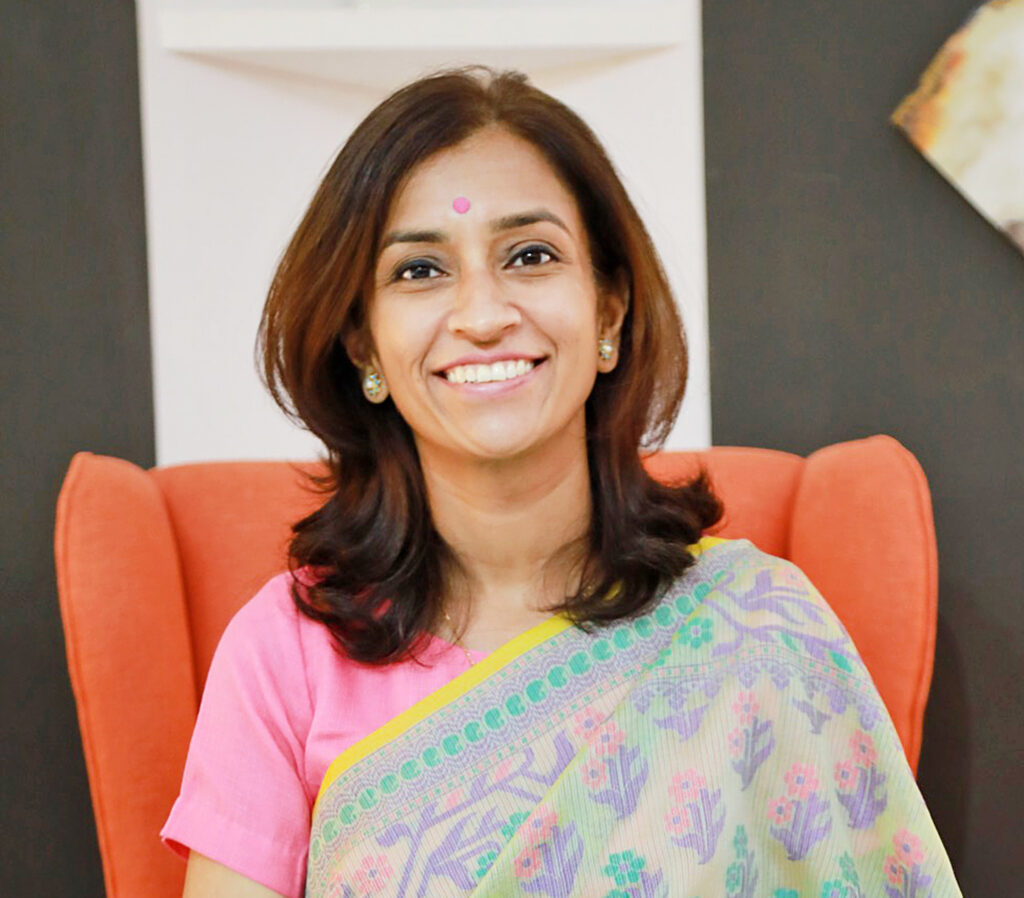
About Ms. Bhavana Bindra, Managing Director of REHAU South Asia.
Ms. Bindra is responsible for the profitable and sustainable growth of the company’s South Asia region. REHAU, is a leading systems and service provider for polymer-based solutions in construction, automotive and industry.
She joined the corporate world starting with The Boston Consulting Group (BCG). In a career spanning two decades, she spent a significant portion in the Manufacturing & Engineering sector with Cummins in India. She has made her mark in the male-dominated industry as the first women leader of businesses focused on Automotive, Mining, Construction, Railways, and Power Generation, among other markets.
Creating global benchmarks, while spearheading unprecedented levels of growth and profitability, she has been a sponsor and proponent of workplace diversity across organizations. Her unbiased decision-making power has given her a well-deserved stature among several public/listed companies where she currently serves as an independent director.
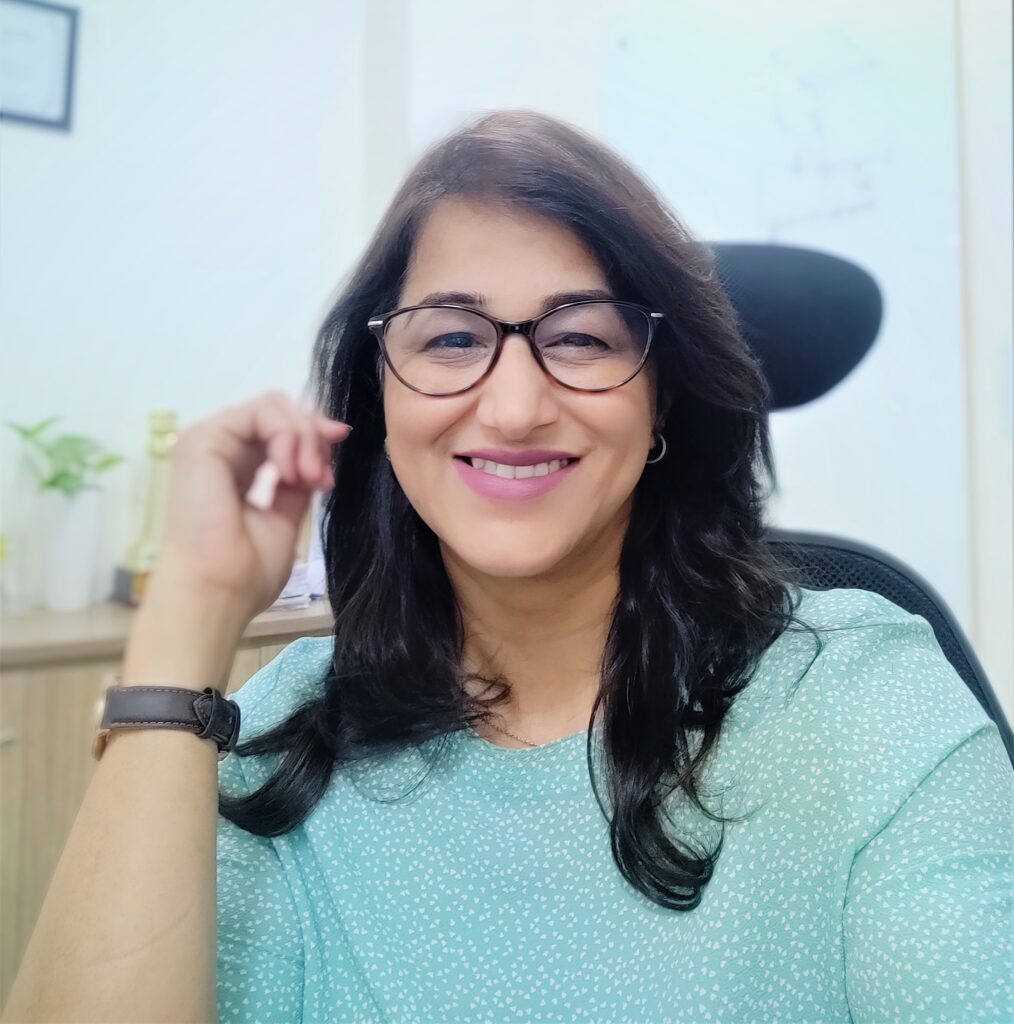
About Ms. Ameeta Nehra, Lead Corporate Communication, Everest Blowers Pvt. Ltd
As a member of the core team, Ms. Nehra plays a strategic role in all critical activities, including branding, infrastructure, team selection, induction and training, supply chain management, and logistics, along with liaising with various government agencies. She is also the founder of Image Street Consulting, a professional corporate training group based in Delhi-NCR. She is a certified image consultant, formerly trained and certified from the Image Consulting Business Institute India, under the tutelage of the Council Institute of Image Management USA, prescribed by Judith Rasband, the image master in the association of Image Consultants International. Her many responsibilities and contributions to the industry-government and academia include engaging as a visiting faculty, assessor, branding consultant and a motivational speaker with organizations such as Haryana Police Academy, Madhuban, Karnal, the State Council Research and Training, Gurugram, as the counsellor at District Child Welfare Association, the Cygnus Group and Advanta Hospital, Gurugram.
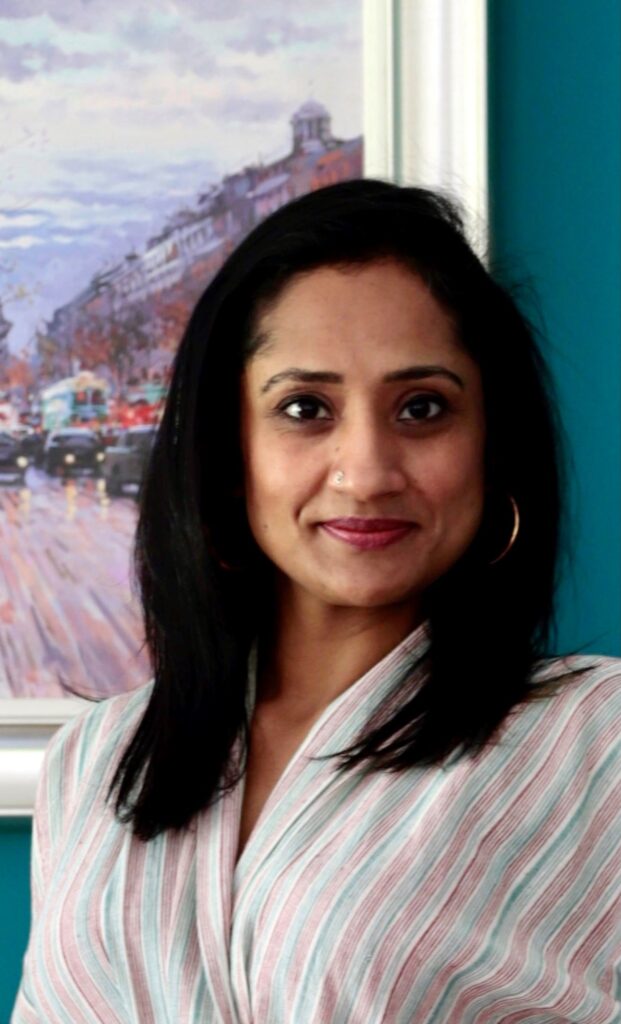
About Ms. Gayathri Sharma, Head of Communications-India and South Asia, Rolls-Royce.
Gayathri Sharma is part of the India Leadership Team at Rolls-Royce and leads Communications and Community Investment for this region. She is also the Chair of the India Diversity and Inclusion Council at Rolls-Royce.
Ms. Sharma is a communications specialist with 20 years’ experience in managing corporate and brand reputation, and Corporate Social Responsibility (CSR). Prior to joining Rolls-Royce, she led Corporate Communications and CSR at PepsiCo India. She has worked in leadership roles across both corporates and PR agencies, leading communications for brands across several sectors. Some of the companies and brands she has worked with over the years include Samsung, Coca-Cola, IKEA, Domino’s, Hero MotoCorp, American Express, Boeing and MasterCard, to name a few.

About Ms. Kavya Iyer, Business Head, Lex Technoaid International
Having been passionate about the field of mechanical engineering from a young age, Ms. Iyer chose to be a part of the family business started by her father after graduation from BMS college of Engineering. She has been in the field of Coolant Filtration and Temperature Management Systems for almost a decade.
She has a strong technical foundation and has taken the company to newer heights in terms of technological development and business growth. The company manufactures equipment that strongly competes with International equivalents and they take immense pride in being the finest indigenous manufacturer in their domain. At Lex Technoaid, she strives to have an environment of continuous learning and innovation, while having an ambience of warmth, liveliness, and contentment.

About Dr. Komal Pawar, Sr. Pre-Sales Consultant, Hexagon (Power, Process, Marine division)
Dr Komal Pawar has 23 years of rich professional experience, which is a blend of both industrial engineering and academic. She executed diverse engineering design projects and important structural projects, specific training to around 500-plus employees. Her basic domain expertise in instrumentation and control system in general. Her research areas are multi-phase flows and buoyancy-induced circulation loops over the last decade. She published her articles in refereed international journals like Chemical Engineering Journal and Taylor and Francis Heat Transfer Engineering Journal.

About Ms. Nidhi Maurya, Sales Manager- Digital Transformation, Hexagon (Manufacturing Intelligence division)
Ms. Maurya has 16-plus years of rich experience in solutions selling to major automotive companies and manufacturing industries across India. She has been working with organisations like Siemens PLM E-Plan, Tata Technologies and handling various portfolios across CAD/ CAM, CIE, PLM, and MES for strategic accounts like Maruti, Hero Motor Corp., Honda Cars, Hyundai, Royal Enfield, to name a few. Her passion towards nature has inspired her to create and moderate a Facebook page called Earth is Crying, to create awareness to save earth.
This article was featured as the cover story in Dynamic Manufacturing India May_June 2022 Edition,
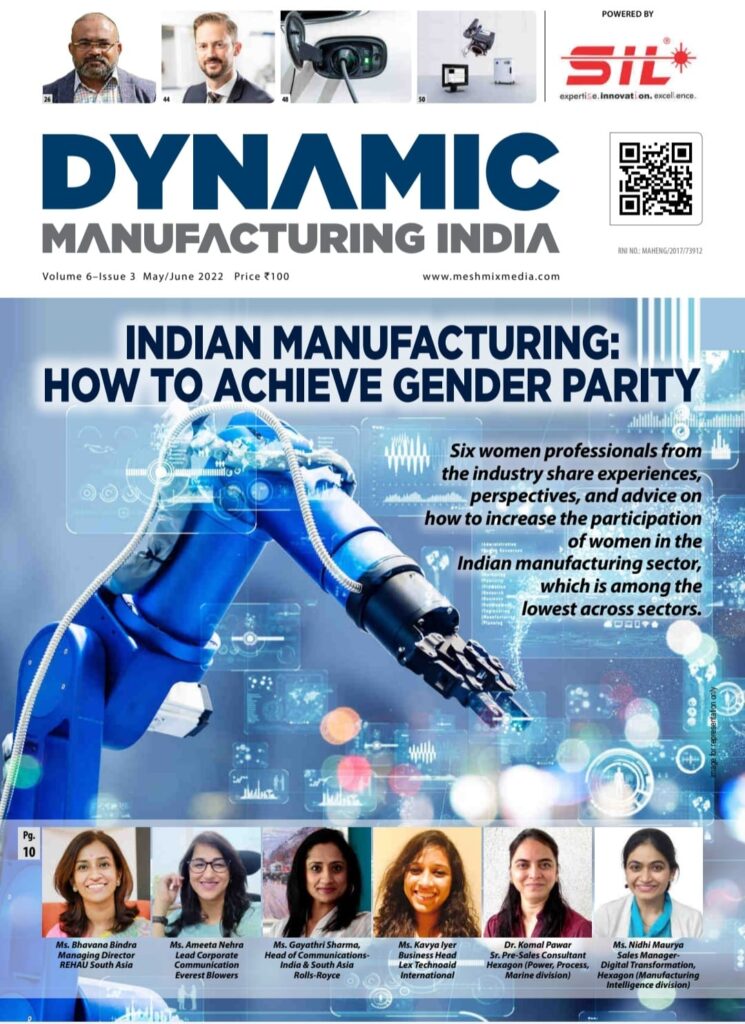
Magazine Link – Read Now


